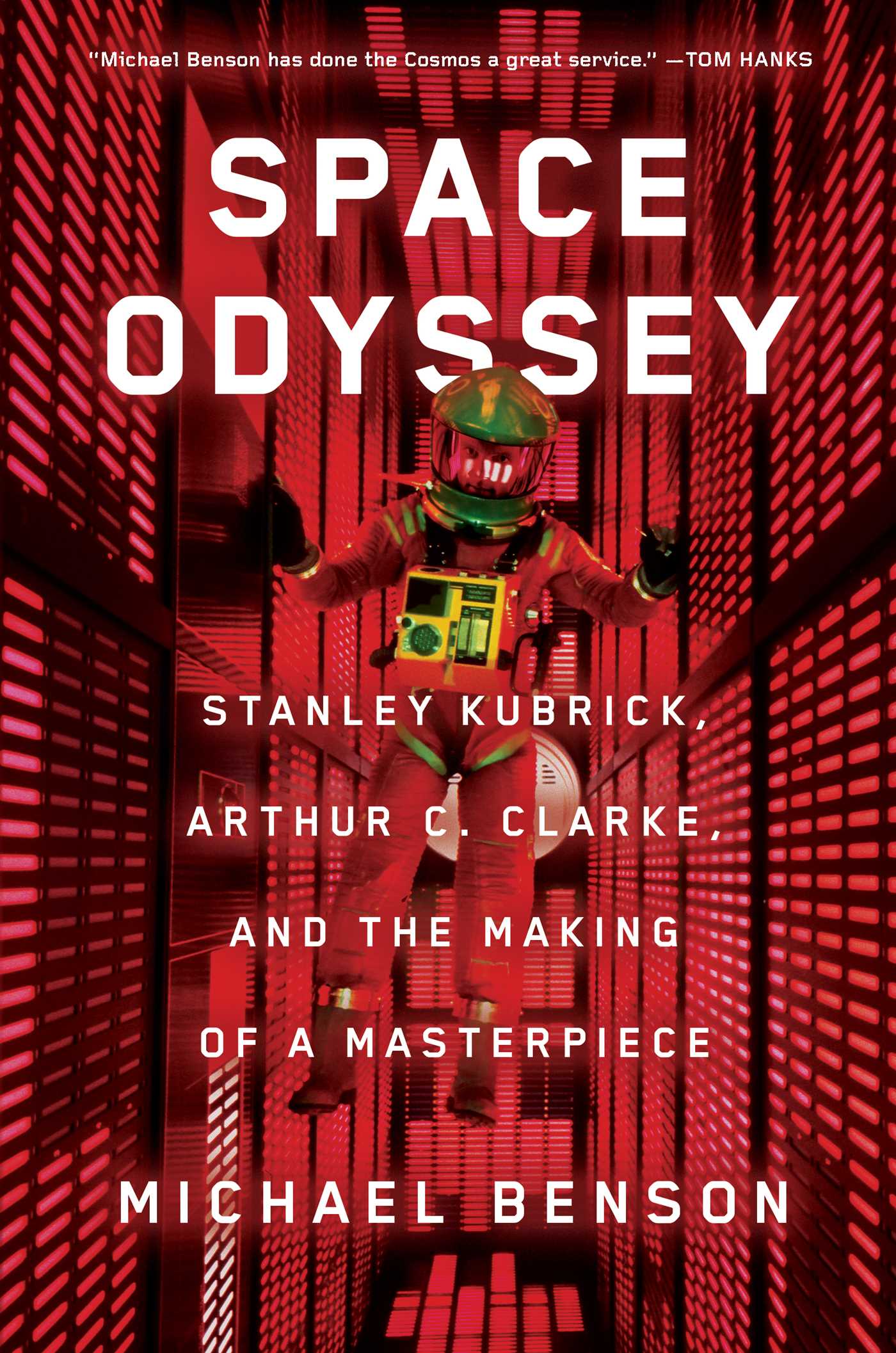Much analogy is made between the artistic accomplishments of James Joyce and Stanley Kubrick in Michael Benson’s 50th anniversary examination of 2001: A Space Odyssey, the 1968 sci-fi classic film directed by Kubrick and co-written by Arthur C. Clarke. For one, both Joyce and Kubrick tip their respective hats to Homer’s Odyssey in both title and content. Joyce’s 1922 novel Ulysses requires no explanation as it updates the journeys of Odysseus and crew in a 20th century Dublin setting. Kubrick’s cinematic speculation on humanity’s evolutionary journey, 2001: A Space Odyssey, even alludes to Odysseus’ archery skills by naming the film’s eventual main character Dave Bowman.
Whereas Joyce’s updated Odysseus (Leopold Bloom) expresses the squalid, scatological and sexual aspects of the human experience, Kubrick’s loose cinematic adaptation of Clarke’s short story “The Sentinel” and subsequent film treatments traces the development of the human race from “stone knives and bearskins” to an antiseptic culture with far deadlier weaponry that includes a murderous artificial intelligence device named HAL 9000.
Created by humans, HAL is subject to human frailties and – it seems – original sin. What’s needed is a new way of thinking, and humanity is spinning its wheels attempting to do it on its own, a common theme expressed in Clarke’s body of work, including his most famous novel, Childhood’s End, and, as well, his short story “The Sentinel.” Without alien intervention, Clarke’s fiction surmises, nascent humanity would’ve died out millennia ago from starvation. The Overlords of Childhood’s End and the titular sentinel are humanity’s only escape from the nuclear armament cul-de-sac. Behold the monolith.
The 11-foot-tall monolith first appears in Kubrick’s film in the opening sequence titled “The Dawn of Man.” A prehistoric tribe on the brink of starvation is granted sudden knowledge about the benefits of eating meat and hunting tools after awakening one day to the presence of the monolith, which to today’s audiences resembles a huge computer thumb drive. No sooner is such preliminary knowledge gained, however, and then it is used by the character Moonwatcher to kill a member of his own species. Violence and sin are indelibly engraved on the souls of men and women – or, at least to atheists Kubrick and Clarke, predominant genetic markers on human DNA. Moonwatcher throws his newfound weapon into the air, and the film transitions to the title year when the sentinel is uncovered from its burial on Earth’s moon.
Despite the atheism of the 2001 collaborators, Benson notes in his Space Odyssey: Stanley Kubrick, Arthur C. Clarke, and the Making of a Masterpiece (Simon & Schuster, 2018) that special effects artist Colin Cantwell’s contribution to the film’s trippy Star Gate sequence contained Christian imagery, particularly when the monolith glides through space:
Cantwell proceeded to film a six-foot-long “baby” monolith turning against black velvet, where it seemed to disappear and reappear in deep space. “It was just lit and shot on a stage with a motor running it like a barbeque spit,” he remembered. “The black block element was shot to fit a particular location on the screen, and the other elements were just designed as a storyboard.” In his final arrangement, the rotating monolith was the horizontal bar of a cross, with a vertical lineup of five moons serving as its upright element, and Jupiter as the ground. A piece of neo-Christian symbolism had found its way into the proceedings, almost by osmosis.”
In a footnote, Benson writes:
Interestingly, the shots that Cantwell had identified as being of interest in [Swedish film director Ingmar] Bergman’s The Virgin Spring included a symmetrical composition reminiscent of Leonardo’s The Last Supper, with Max von Sydow in the central Christ position.
This, in a film co-written and based on a short story by Clarke, a man who publicly debated the merits of space travel in 1953 with none other than two of the 20th century’s most prominent Christian apologists, C.S. Lewis and J.R.R. Tolkien. Coincidentally, writes Benson:
Arthur C. Clarke died in Colombo [Sri Lanka] on March 19, 2008, of respiratory complications leading to heart failure. He left explicit instructions that no religious rituals of any kind should be performed at his funeral, but a few hours after his death, a gamma ray burst of unprecedented scale reached Earth from a distant galaxy. More than two million times brighter than the most luminous supernova ever recorded, its energy had taken seven and a half billion years to arrive at the solar system – about half the age of the observable universe. Having traveled through space and time since long before our planet formed, for about thirty seconds this vast cosmic explosion became the most distant object ever seen from Earth with the naked eye.
Benson goes into absorbing detail of the four years’ effort that fulfilled Kubrick’s desire to make a truly great film possessing appeal beyond the realm of the science fiction genre. Truly, up to its release in 1968, no science fiction film attempted much less succeeded to the degree 2001: A Space Odyssey did, unfairly earning it a reputation as confusing and obscure. In fact, the message is quite clear – humanity yesterday, today and in the future requires a Higher Power.
Click here to listen to my Radio Free Acton conversation on the 50th anniversary of 2001: A Space Odyssey with critic Titus Techera.
